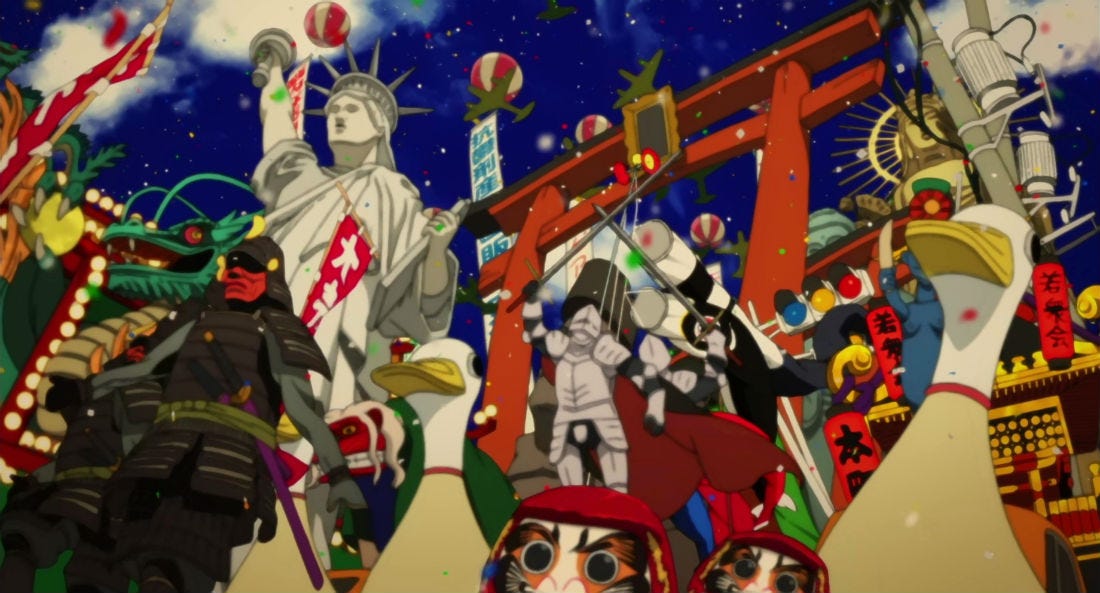The Flip Side #2
Navigating Brand Worlds. Finding the next growth stage for your business in an increasingly competitive landscape
Greetings from Sunny Singapore ☆゚. * ・ 。゚,
Happy Friday everyone. Thank you for taking the time to open this newsletter. This means a lot to me and the team at Sunny Side Up.
This topic has been on our radar, we have been exploring the use of brand worlds in our strategy and it has deeply informed many parts of the businesses we have been partnering to transform.
I should quickly clarify that writing is not intuitive for me. I am design trained and this would be a good exercise to pen my thoughts for the world to critique on. The main goal of this endeavour is to impart to you my experiences and learnings. Hopefully this imparts a few insights, otherwise I am happy to clarify further. Your comments are really helpful to me; if there is anything you can learn, I've succeeded.
ʕっ•ᴥ•ʔっ
The next era of branding
According to reports like this article from New York Times, the traditional mood board is becoming obsolete. While not entirely "dead" to us, its limitations are becoming apparent. In fact, it is glaring to us. We need to be moving away from the static, overly consistent brands as we know today, to hyperconnected and constantly evolving ecosystems.
This shift isn't new to us. The term "brand world" caught my attention during a conversation stateside, and it's been a game-changer.
So, what is a brand, truly? There's often confusion between branding and marketing. To clarify: branding isn't marketing, and marketing isn't branding. To quote Koto Studio:
“Brands are results, established in the mind, built over time. Repeated actions create strong patterns and people’s minds like patterns. The clearer the pattern, the more identifiable the brand.”
Let’s dive deeper into the world
Looking beyond the superficial, there’s a lot more areas to a brand.
Verbal Identity: Vocabulary, messaging and brand line
Visual Identity: Motion, art direction, color, typography and illustration
Brand Values and Personality: The core principles, persona and tone of voice
Customer Experience: The sum of all interactions between a brand and its customers
Brand Positioning: Finding that white space especially in highly competitive categories.
Culture: Pulling the cultural levers and mental models to resonate with the audiences
There are obviously way more components to branding and for many reason I won’t overwhelm you with the full spectrum today. To wrap this point up, the real challenge lies not in continuous rebranding but in nurturing a brand that genuinely connects and endures.
Introducing brand worlds
A brand world is a broader, evolutionary leap from the static mood boards to more immersive and sensorial experiences. It begs to be discovered, beyond the visual dimension most brands would be using. It is sensorial. It encompasses the other senses which feels alive and acts as a sandbox for the brand to operate in.
This encompasses the full narrative of a brand's presence, be it the tone of its online content or ambience of offline spaces. This comprehensive approach is critical as branding expands to include not just visual identities but immersive universes for us to explore and discover.
The next frontier: building worlds
Crafting a brand world isn't about creating fantastical universes (unless you're equipped for it). It's about setting flexible guidelines that allow your brand to evolve and resonate across different mediums and senses. Koto Studio has rightly covered this in their insight-packed newsletter about brand consistency. Hence I would defer this topic to their expertise.
Exploring engaging brand worlds
Among the myriad of brand worlds that captivate and inspire, Liquid Death and Seed stand out for their unique narratives. These brands have transcended traditional marketing by crafting immersive worlds that engage their audiences on multiple levels. In my opinion, this leads to a much larger canvas for you to build the brand upon, keeping you adaptable to the volatile social and cultural narratives globally.
Brand world exemplars
Liquid Death: quenching thirst with attitude
Liquid Death has turned the act of drinking water into a rebellious statement against plastic pollution and unhealthy beverages. With its eye-catching, tallboy cans adorned with skull imagery, Liquid Death markets itself with a punk rock ethos, promising to "murder your thirst." This isn't just about selling water; it's about joining a movement. The brand uses humor, shock value, and a strong environmental message to stand out. Their world is one where sustainability is cool, and drinking water from a can is a way to belong to a community fighting against plastic waste. Liquid Death's narrative extends beyond the product, creating a brand experience that includes merchandise, engaging social media content, and a distinctive tone of voice that challenges the status quo.
Seed: science as a brand universe
Seed operates in the realm of probiotics, but its approach to branding is anything but clinical. By leveraging the power of storytelling and scientific education, Seed has created a brand world that demystifies the science of microbiomes in an accessible and captivating way. Their narrative is not just about selling probiotics; it's about inviting the audience into a journey of discovery about their health and the planet's. Seed's packaging, content, and educational materials all contribute to a cohesive experience that positions the brand as both a leader in the field and a trusted educator.
The use of visually appealing designs, clear communication, and collaboration with scientists and artists alike has enabled Seed to build a brand world that emphasizes the importance of science in everyday wellness.
Creating worlds beyond campaigns
What sets brands like Liquid Death and Seed apart is their ability to create immersive brand environments that extend far beyond the product itself. These worlds encapsulate a set of values and an aesthetic that pulls the cultural levers of their target audiences. By doing so, they engage consumers on a level that fosters loyalty and advocacy, transforming customers into active participants in their brand stories.
In crafting these worlds, both Liquid Death and Seed demonstrate the power of a well-executed brand world in building emotional rapport with consumers. People want to be entertained or educated, and this concept can be a catalyst for more creativity and storytelling. This stands for something and ultimately creates a universe where consumers can belong.
These examples underline the evolution from static mood boards to dynamic, sensory-rich brand worlds. This offers a range of creative opportunities, allowing your brand to navigate the increasingly noisy world. Cutting through the clutter would be more valuable than blanding with your branding.
What are your thoughts regarding brand worlds? What else are you curious about? Please feel free to reach out to me anytime via email or the comments to discuss further.
We are still a work in progress. However if you like what we share please follow this substack. Or you may find us on Instagram or LinkedIn.
P.S. See you in 2 weeks for the next edition






